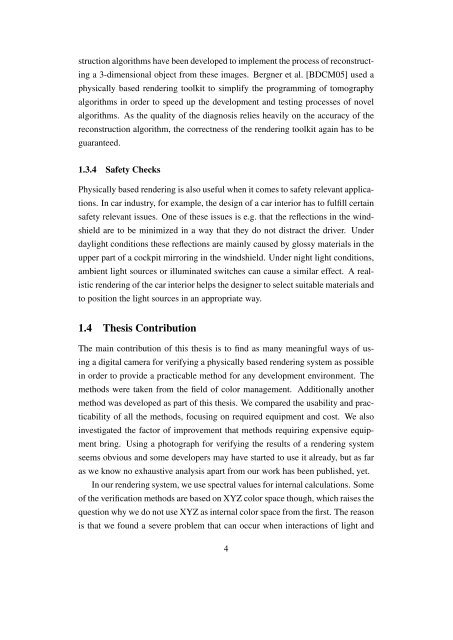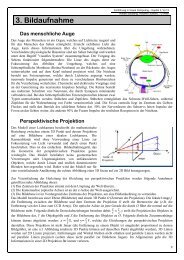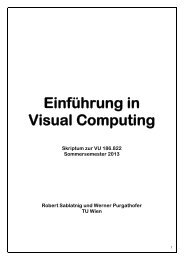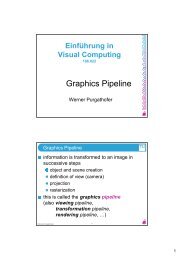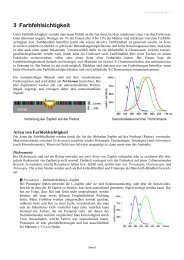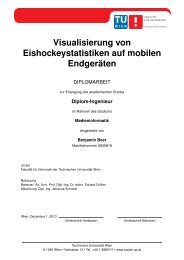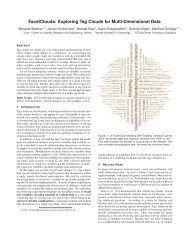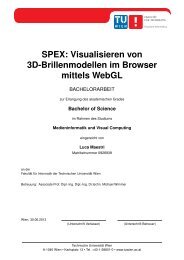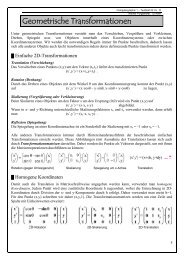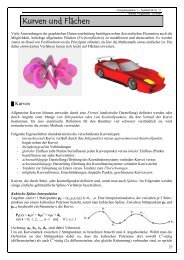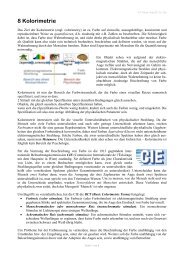Usability of Digital Cameras for Verifying Physically Based ...
Usability of Digital Cameras for Verifying Physically Based ...
Usability of Digital Cameras for Verifying Physically Based ...
You also want an ePaper? Increase the reach of your titles
YUMPU automatically turns print PDFs into web optimized ePapers that Google loves.
struction algorithms have been developed to implement the process <strong>of</strong> reconstruct-<br />
ing a 3-dimensional object from these images. Bergner et al. [BDCM05] used a<br />
physically based rendering toolkit to simplify the programming <strong>of</strong> tomography<br />
algorithms in order to speed up the development and testing processes <strong>of</strong> novel<br />
algorithms. As the quality <strong>of</strong> the diagnosis relies heavily on the accuracy <strong>of</strong> the<br />
reconstruction algorithm, the correctness <strong>of</strong> the rendering toolkit again has to be<br />
guaranteed.<br />
1.3.4 Safety Checks<br />
<strong>Physically</strong> based rendering is also useful when it comes to safety relevant applica-<br />
tions. In car industry, <strong>for</strong> example, the design <strong>of</strong> a car interior has to fulfill certain<br />
safety relevant issues. One <strong>of</strong> these issues is e.g. that the reflections in the wind-<br />
shield are to be minimized in a way that they do not distract the driver. Under<br />
daylight conditions these reflections are mainly caused by glossy materials in the<br />
upper part <strong>of</strong> a cockpit mirroring in the windshield. Under night light conditions,<br />
ambient light sources or illuminated switches can cause a similar effect. A real-<br />
istic rendering <strong>of</strong> the car interior helps the designer to select suitable materials and<br />
to position the light sources in an appropriate way.<br />
1.4 Thesis Contribution<br />
The main contribution <strong>of</strong> this thesis is to find as many meaningful ways <strong>of</strong> us-<br />
ing a digital camera <strong>for</strong> verifying a physically based rendering system as possible<br />
in order to provide a practicable method <strong>for</strong> any development environment. The<br />
methods were taken from the field <strong>of</strong> color management. Additionally another<br />
method was developed as part <strong>of</strong> this thesis. We compared the usability and prac-<br />
ticability <strong>of</strong> all the methods, focusing on required equipment and cost. We also<br />
investigated the factor <strong>of</strong> improvement that methods requiring expensive equip-<br />
ment bring. Using a photograph <strong>for</strong> verifying the results <strong>of</strong> a rendering system<br />
seems obvious and some developers may have started to use it already, but as far<br />
as we know no exhaustive analysis apart from our work has been published, yet.<br />
In our rendering system, we use spectral values <strong>for</strong> internal calculations. Some<br />
<strong>of</strong> the verification methods are based on XYZ color space though, which raises the<br />
question why we do not use XYZ as internal color space from the first. The reason<br />
is that we found a severe problem that can occur when interactions <strong>of</strong> light and<br />
4


